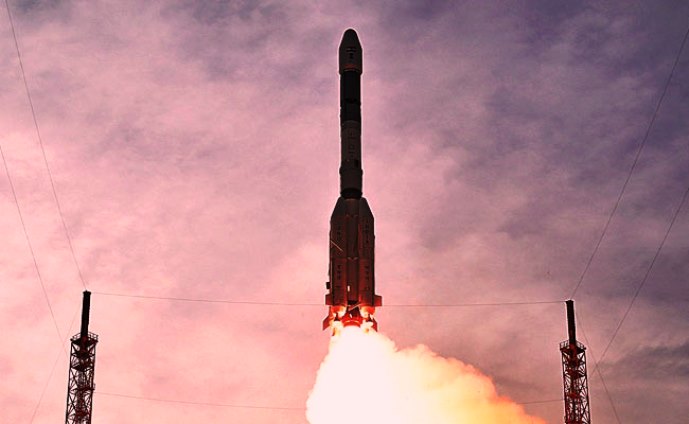-
Tips for becoming a good boxer - November 6, 2020
-
7 expert tips for making your hens night a memorable one - November 6, 2020
-
5 reasons to host your Christmas party on a cruise boat - November 6, 2020
-
What to do when you’re charged with a crime - November 6, 2020
-
Should you get one or multiple dogs? Here’s all you need to know - November 3, 2020
-
A Guide: How to Build Your Very Own Magic Mirror - February 14, 2019
-
Our Top Inspirational Baseball Stars - November 24, 2018
-
Five Tech Tools That Will Help You Turn Your Blog into a Business - November 24, 2018
-
How to Indulge on Vacation without Expanding Your Waist - November 9, 2018
-
5 Strategies for Businesses to Appeal to Today’s Increasingly Mobile-Crazed Customers - November 9, 2018
India to launch first astronomical observatory
In this process, India became the first country in the developing world to achieve this feat.
Advertisement
India has successfully launched its first space observatory “Astrosat” into the orbit.
In addition to NASA and ESA, the space agencies of Japan and Russian Federation have also launched similar observatories in the past. This scientific satellite mission endeavours for a more detailed understanding of our universe.
“Astrosat is special due to the choice of instruments to study in multi-wave lengths – UV rays, visible and X-rays – which even the Hubble doesn’t have”, A S Kiran Kumar, chairman of the Indian Space Research Organisation (Isro), said in a recent interview.
Despite the recent successes, the growth of India’s space programme has been stymied by lack of heavier launchers and slow execution of missions – during 2007-2012, only about half of the planned 60 missions were accomplished.
The launch – the 30th successful one in a row for the PSLV – will also place one Canadian and one Indonesian satellite in orbit, as well as four American nano-satellites, a first. Astrosat was successfully placed in orbit 650 km above the earth’s surface and separated from the fourth stage of PSLV-C30 approximately twenty two minutes after lift-off. ISRO officials said that no comparison can be done between Hubble and ASTROSAT as the latter is much smaller in size; however, the official quickly added that India’s satellite is in no way inferior to Hubble. India has launched 45 satellites so far.
Though there have been scientific missions in the past by ISRO – Aryabhata, SROSS, Youthsat, IRS-P3, GSAT-2, Chandrayaan-1 and Mars Orbiter Mission, this is the first time ISRO is launching a space observatory into space.
The PSLV-XL version is a four-stage rocket with six strap-on motors for additional thrust during the initial phase of the flight.
The agency also told TheReporterTimes that the findings to be found during trials will be examined by some of the India’s leading astronomy institutes and universities. The unique feature of Astrostat is that it will provide simultaneous multi-wavelength observation of various astronomical objects from a single satellite.
Advertisement
Global customer satellites that piggybacked the polr rocket were the LAPAN-A2 of Indonesia meant for maritime surveillance using Automatic Identification System (AIS), and maritime monitoring nanosatellite from Canada, NLS-14 (Ev9), which uses “next generation” AIS.




























